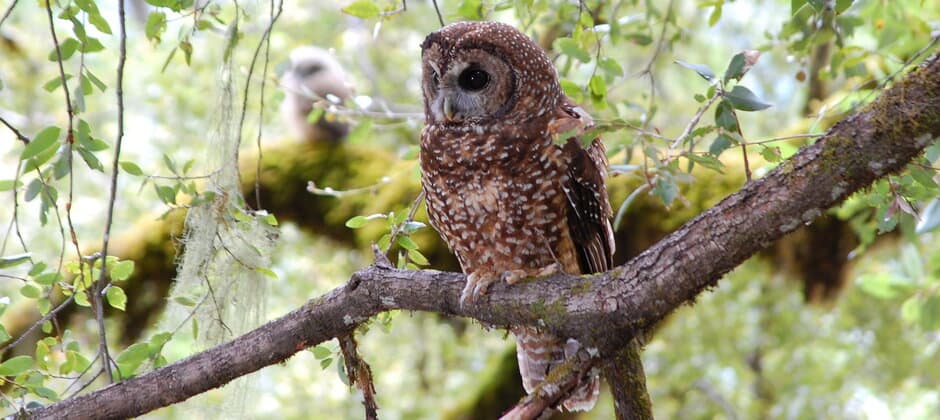Share this article
Barred owls are main culprit in northern spotted owl declines
A meta-analysis of northern spotted owl population data shows that a primary reason for their decline has been the invasion of barred owls from the eastern U.S.
Compiling data from 11 study areas throughout the Pacific Northwest, researchers found northern spotted owl numbers were experiencing annual declines of 6-9% in six study areas and 2-5% in five of them. This has resulted in populations on most study areas that are less than 35% of their levels in 1995.
“[The study areas] are basically across the range of the owl from Washington to Oregon and northern California,” said Alan Franklin, a research biologist and project lead at the National Wildlife Research Center with USDA Wildlife Services and lead author of the study published in Biological Conservation.
For the past 30 years, biologists have conducted a meta-analysis every five years as part of the Forest Service’s Northwest Forest Plan, a documented created to help recover the federally threatened northern spotted owl (Strix occidentalis caurina) throughout its range. Researchers look at trends in the owls’ reproduction, survival rates, recruitment, territory occupancy and rates of population change alongside a range of variables. Those variables include climate and weather information, habitat characteristics and barred owl (Strix varia) populations, which have been growing throughout the region, competing with the closely related northern spotted owls.
After compiling the results from 26 years of data, the team found that barred owl presence by far outweighed all other factors when it came to negatively impacting spotted owl populations. “This was the overriding factor that was affecting more of the demographic parameters than previous meta-analyses,” he said. “That doesn’t mean that the other factors aren’t important, just that the barred owls sort of washed out the other effects.”
In some areas, good habitat conditions are ameliorating the effects of barred owls, and northern populations are generally more affected by the invasive owls than southern ones, “but they’re still pretty bad across the range.” Franklin said.
Maintaining habitat conditions remains important, he said, but removing barred owls is a key tool to help the northern spotted owl recover. Other recent research has found that removing barred owls stopped northern spotted owl populations from declining further.
Franklin said he’s optimistic that by decreasing barred owls and conserving habitat, spotted owls will return, but the recovery will be faster in some areas than others. “In some areas in Washington state and Oregon, it’s going to take a while to remove barred owls before spotted owls recover, just because their populations are so reduced,” he said.
Header Image: Declines of northern spotted owls, like the one pictured here, are mostly driven by barred owl invasions. Credit: Peter C. Carlson








